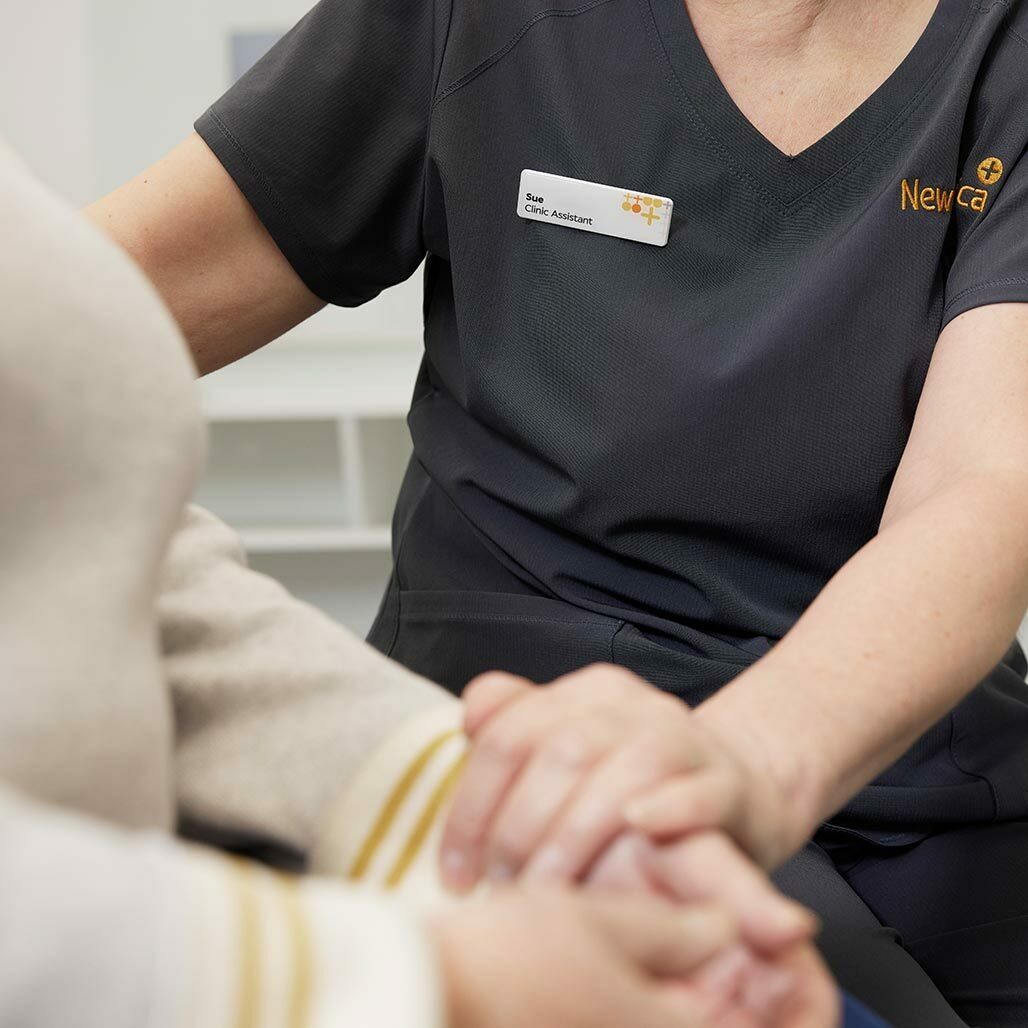
Historically, there has been no treatment for dry AMD. Instead, lifestyle adjustments – including dietary supplements, ultra-violet light protection and a healthy diet – may slow progression.
At Newmedica's Bury st Edmunds eye clinic, we are delighted to offer our patients the first approved treatment for dry AMD. The LumiThera Valeda light delivery system is a safe, non-invasive therapy that improves retinal cell function to slow the progression of dry AMD and the rate of vision loss.
What is Valeda light therapy?
Valeda light therapy uses photobiomodulation (PBM), a form of low-level laser therapy, to apply different wavelengths of light to the eye. The system uses three specific wavelengths of light to target retinal cells.
PBM works by stimulating energy production within the retinal cells, improving their ability to perform their role. Light therapy helps the retinal cells produce more energy and boosts a natural chemical called nitric oxide, which keeps your blood vessels working well. Cellular health is essential for maintaining optimal retinal health.
Treatment is in cycles of nine Valeda light therapy sessions spread over three to five weeks. The cycles are repeated, usually three to four times a year to maintain the effect and slow the progression of dry AMD.
Benefits and results of Valeda light therapy
Clinical trials have shown that treatment with Valeda light therapy enhances visual function, including improvement in detailed vision and when assessed on an eye chart. Scans and images of the eye show reduction in the drusen, the waste product which thins the retina as it builds up under the macula. Additionally, fewer eyes treated with Valeda light therapy progressed to advanced AMD (geographic atrophy) compared with untreated eyes, indicating a slowing of disease progression.
Further research and development is ongoing and the full potential of Valeda light therapy is still being explored.
Who is suitable for the treatment?
Valeda light therapy is suitable for patients with dry AMD. Those choosing treatment should have a diagnosis of dry AMD confirmed from an eye care professional. Valeda light therapy works best for individuals with early to intermediate stages of the disease who are experiencing gradual vision loss but haven’t developed advanced retinal damage.
Your initial appointment with a specialist consultant will include comprehensive scans of the retina and an eye examination to confirm whether the treatment would be beneficial. They will fully explain your diagnosis and personalised treatment plan and answer any questions you have. Therapy can be offered for one or both eyes, depending on clinical findings.
It’s important to note that the effectiveness of Valeda light therapy may vary from patient to patient. Those with severe visual loss are less likely to notice significant improvements, and vision loss will still progress even with treatment.
If you have cataracts you can still have Valeda light therapy.
Dry AMD treatment costs
The Dry AMD cost is the same whether it is one or both eyes
Initial consultation: £300
Consultant-led, all diagnostic assessments including OCT scan and fundus photography.
First treatment cycle: £1,300
Includes nine Valeda light therapy sessions over a three to five-week period.
Subsequent treatment cycles: £1,450
All diagnostic assessments, including OCT scan and fundus photography. Nine Valeda light therapy sessions over a three to five-week period.
Please note, this treatment is currently only being offered by Newmedica Suffolk at their surgical centre in Bury St. Edmunds.
Learn more about Age-related macular degeneration (AMD)
